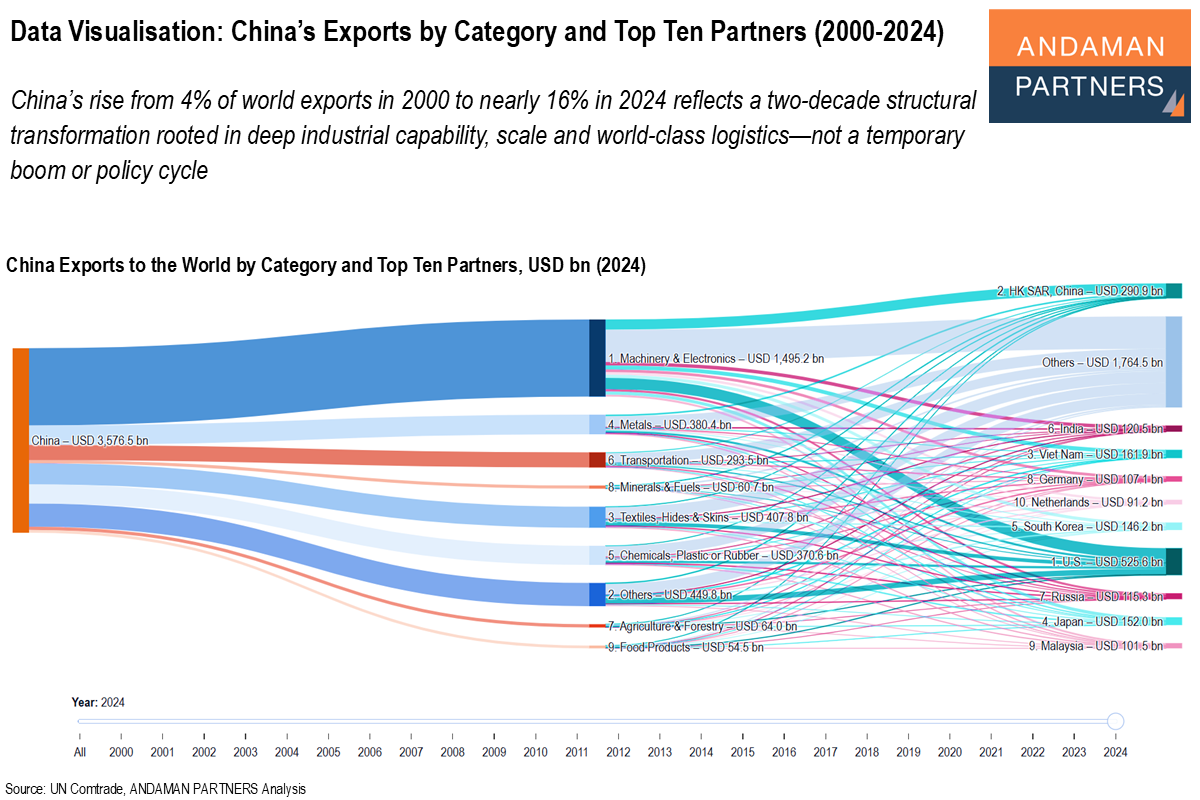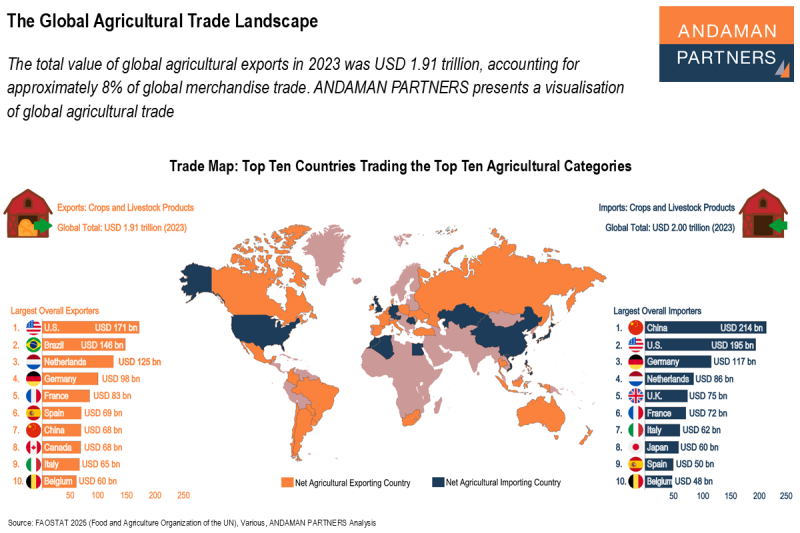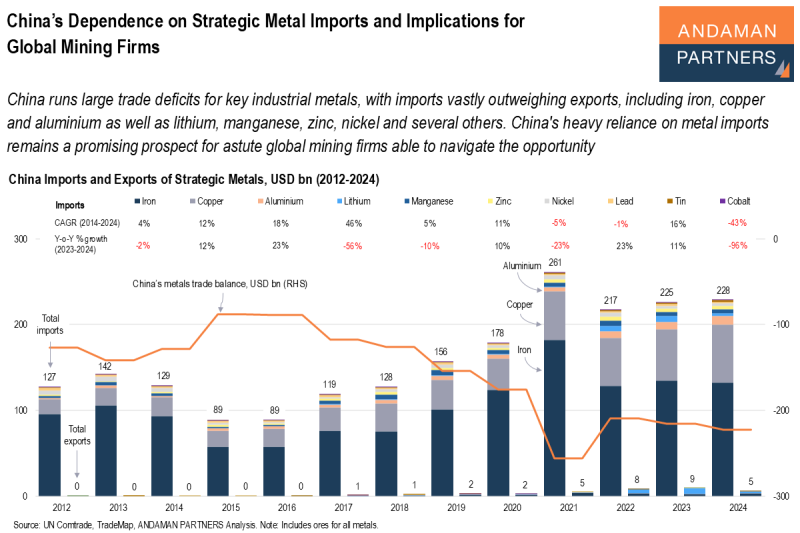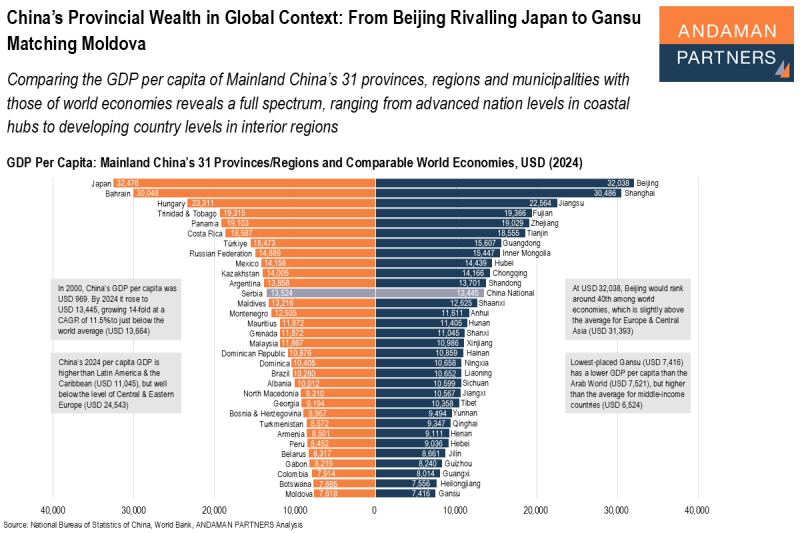China’s rise from 4% of world exports in 2000 to nearly 16% in 2024 reflects a two-decade structural transformation rooted in deep industrial capability, scale and world-class logistics—not a temporary boom or policy cycle.
China’s export structure has long been anchored by Machinery & Electronics, which rose from roughly 30% of exports in 2001 to a stable 40-45% from the mid-2000s onward. In 2024, the category reached USD 1.50 trillion, accounting for 41.8% of national exports.
Over 2000-2024, Transportation was China’s fastest-growing category (15% CAGR), followed by Machinery & Electronics (13%), Chemicals (13%), Metals (12%) and Food Products (10%). By contrast, traditional labour-intensive sectors such as Textiles, Minerals & Fuels and Agriculture & Forestry posted more moderate growth of 7-8%.
The long-run sectoral shift is stark: Textiles fell from 27.6% of exports in 2000 to 11.4% in 2024, reflecting rising wages and China’s move into higher-value production. Transportation products, such as cars, electric vehicles (EVs) and ships, expanded from 3.7% of exports in 2000 to 8.2% in 2024, driven by automotive upgrading and the global spread of Chinese EVs and machinery.
China’s partner mix also changed profoundly. The U.S. has been China’s largest single-country market since 1999. Hong Kong, still the second-largest destination in 2024 with USD 292 billion (8.6%), functions mainly as a re-export and logistics gateway (around 99% of its merchandise exports are re-exports).
But since 2000, China’s export geography has become more diversified and more regional. As China’s coastal ports, inland logistics corridors and supply-chain linkages expanded, exports to Hong Kong and Japan declined, while flows to Southeast Asia (Vietnam, Malaysia, Thailand), South Asia (India) and newer hubs such as Mexico, the UAE and Russia rose sharply.
By 2024, after the U.S. and Hong Kong, China’s following four largest export markets were all in Asia (Japan, South Korea, Vietnam, India), each accounting for under 5% of total exports. Russia moved up to seventh place, while Germany and the Netherlands represented China’s key European destinations; Malaysia completed the top ten. Markets 11-20 span the Western Hemisphere (Mexico, Brazil), Europe (the U.K.), the Middle East (UAE) and Asia (Indonesia, the Philippines), underscoring China’s increasingly multipolar export footprint.
Also by ANDAMAN PARTNERS:
ANDAMAN PARTNERS supports international business ventures and growth. We help launch global initiatives and accelerate successful expansion across borders. If your business, operations or project requires cross-border support, contact connect@andamanpartners.com.

AAMEG Sundowner Event in Cape Town Ahead of Mining Indaba 2026
ANDAMAN PARTNERS is pleased to sponsor and support the AAMEG Pre-Indaba Cocktail.

ANDAMAN PARTNERS to Attend Future Minerals Forum 2026 in Riyadh, Saudi Arabia
ANDAMAN PARTNERS Co-Founders Kobus van der Wath and Rachel Wu will attend the Future Minerals Forum (FMF) in Riyadh, Saudi Arabia.

ANDAMAN PARTNERS to Attend Investing in African Mining Indaba 2026 in Cape Town
ANDAMAN PARTNERS Co-Founders Kobus van der Wath and Rachel Wu will attend Investing in African Mining Indaba 2026 in Cape Town, South Africa.
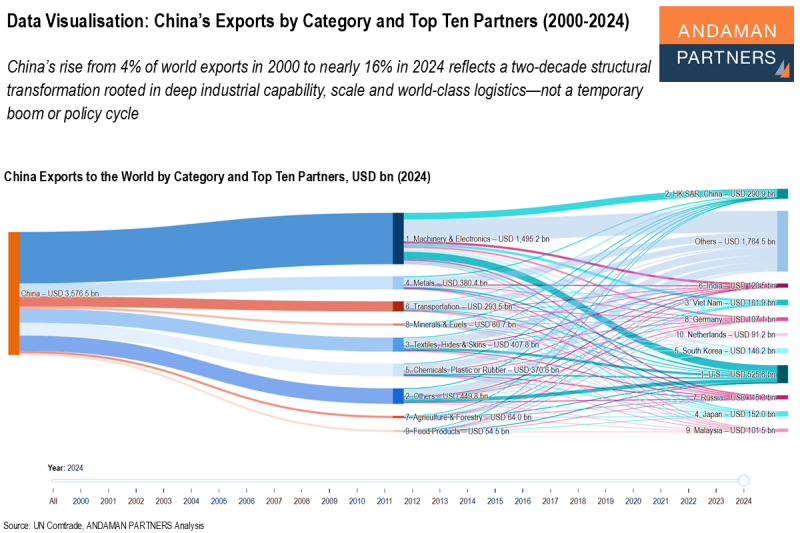
Data Visualisation: China’s Exports by Category and Top Ten Partners (2000-2024)
China’s rise from 4% of world exports in 2000 to nearly 16% in 2024 reflects a two-decade structural transformation.
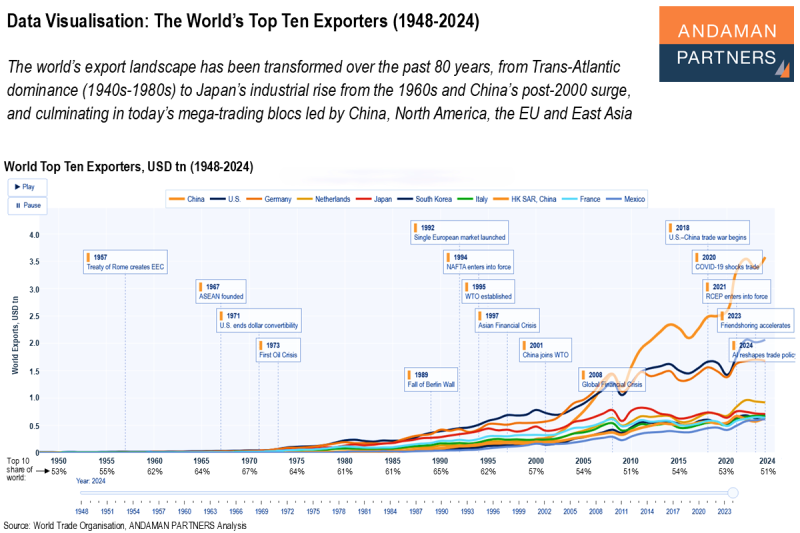
Data Visualisation: The World’s Top Ten Exporters (1948-2024)
The world’s export landscape has been transformed over the past 80 years, from Trans-Atlantic dominance to Japan’s and China’s rise and mega-trading blocs.
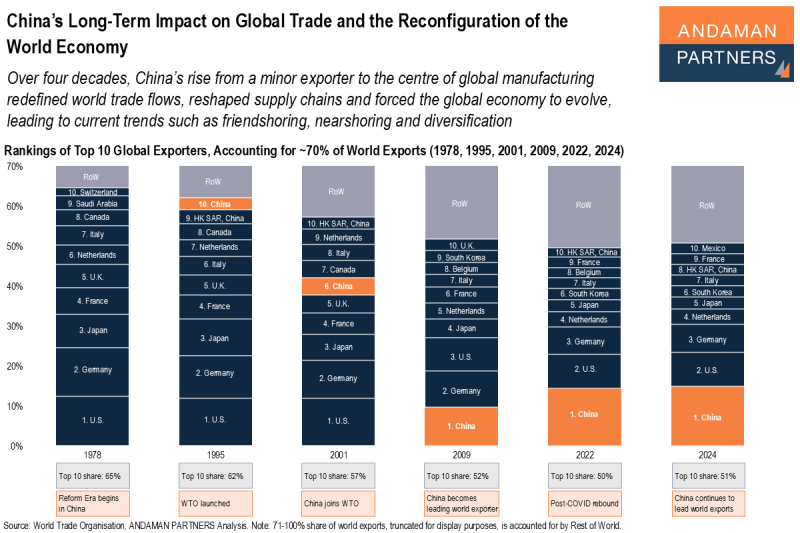
China’s Long-Term Impact on Global Trade and the Reconfiguration of the World Economy
China’s rise from a minor exporter to the centre of global manufacturing redefined world trade flows, reshaped supply chains and forced the global economy to evolve.

